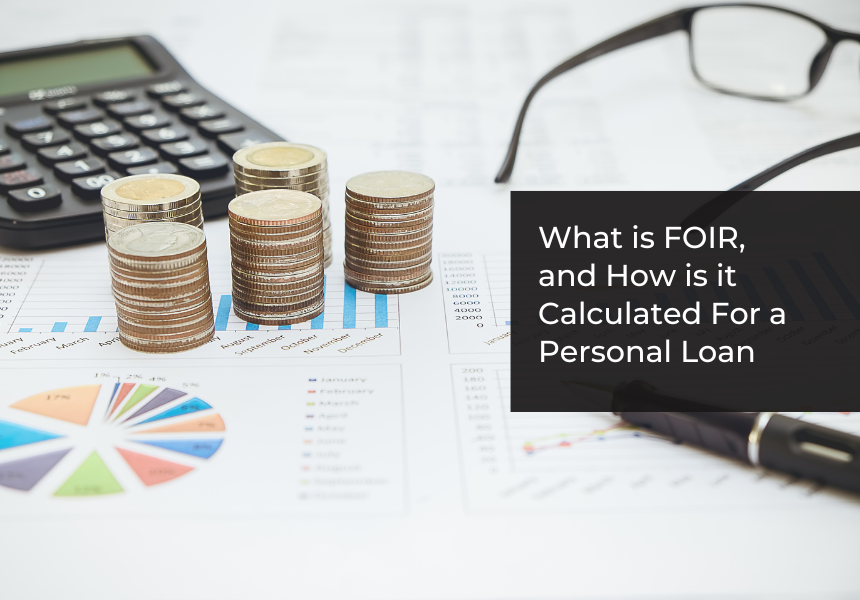
When applying for a personal loan, one of the major factors that lenders pay attention to is your ability to repay the loan. Before approving a Personal Loan application, lenders take the initial step of assessing the applicant’s eligibility. They examine the applicant’s credit score, monthly income, employment history, and existing loans to evaluate their ability to repay the loan. These factors help financial institutions determine whether the borrower can fulfill the loan repayment obligations.
What is FOIR?
FOIR (Fixed Obligation to Income Ratio), also called the debt to income ratio, is a crucial aspect that lenders examine prior to granting a personal loan. It helps lenders determine whether an applicant can afford to repay the loan by taking into account their income and fixed monthly expenses such as taxes, provident funds, and existing loans.
Typically, it is suggested to have a FOIR between 40% and 55%. A lower FOIR indicates that the applicant’s monthly expenses are much less than their income, which demonstrates their ability to repay the loan.
How is FOIR Calculated?
The FOIR calculation is simple using the equation given below:
The monthly debt of an individual normally includes loan EMIs, credit card bills, and other forms of credit. The sum of these debts is first divided by the net monthly income and then multiplied by 100 to get the FOIR.
FOIR= (Sum of existing fixed liabilities / Monthly Income) X 100
For example, Mr X earns a salary of Rs. 75,000 per month. The regular expense is Rs. 20,000 every month and pays Rs. 10,000 for a personal loan
FOIR = [(20,000+10,000)/75,000]x100 = 40%
If Mr.X has to apply for another loan, the EMI amount should ideally be less than 50% so that he can repay the loan comfortably. In the example above, the FOIR is 40%, so X should be eligible for the personal loan.
Ways to Reduce FOIR
- Joint Loan – You may want to think about applying for a personal loan together with a co-applicant who is employed and is either your spouse, parent, or sibling. This increases the likelihood of getting approved for the loan because when you have a co-applicant, the burden of monthly loan installments is shared between both of you.
- Timely Repayment of Debt – It is crucial to keep a good track record of your credit history for all your debts. This includes making timely payments for EMIs, credit card bills, and repaying overdrafts, among others.
- Low Credit Utilisation Ratio – The credit utilisation ratio is the ratio between your credit amount to the maximum credit available to you. According to the rule, the credit utilisation ratio should be below 30% before applying for a personal loan. If the ratio is constantly high then it is more likely to be rejected.
- Avoid Multiple Loans – Lenders prefer to lend money to individuals who can manage their expenses effectively. If a borrower has obtained multiple loans, it indicates that they may struggle to handle their expenses properly.
- Avoid Frequent Job Switches – If a borrower frequently changes jobs within a short span of time, lenders may view such profiles as unfavourable when considering personal loan applications.
Conclusion
FOIR (Fixed Obligation to Income Ratio) is a significant factor used by lenders to assess an individual’s eligibility for a personal loan. It calculates the proportion of an applicant’s fixed monthly obligations, such as taxes, provident funds, and other loans, in relation to their income. A lower FOIR indicates a healthier financial position and a greater ability to repay the loan. It is advisable to maintain a FOIR between 40% and 55% for better chances of loan approval. Lenders also consider other factors like credit history, credit utilisation ratio, and job stability when evaluating personal loan applications.








